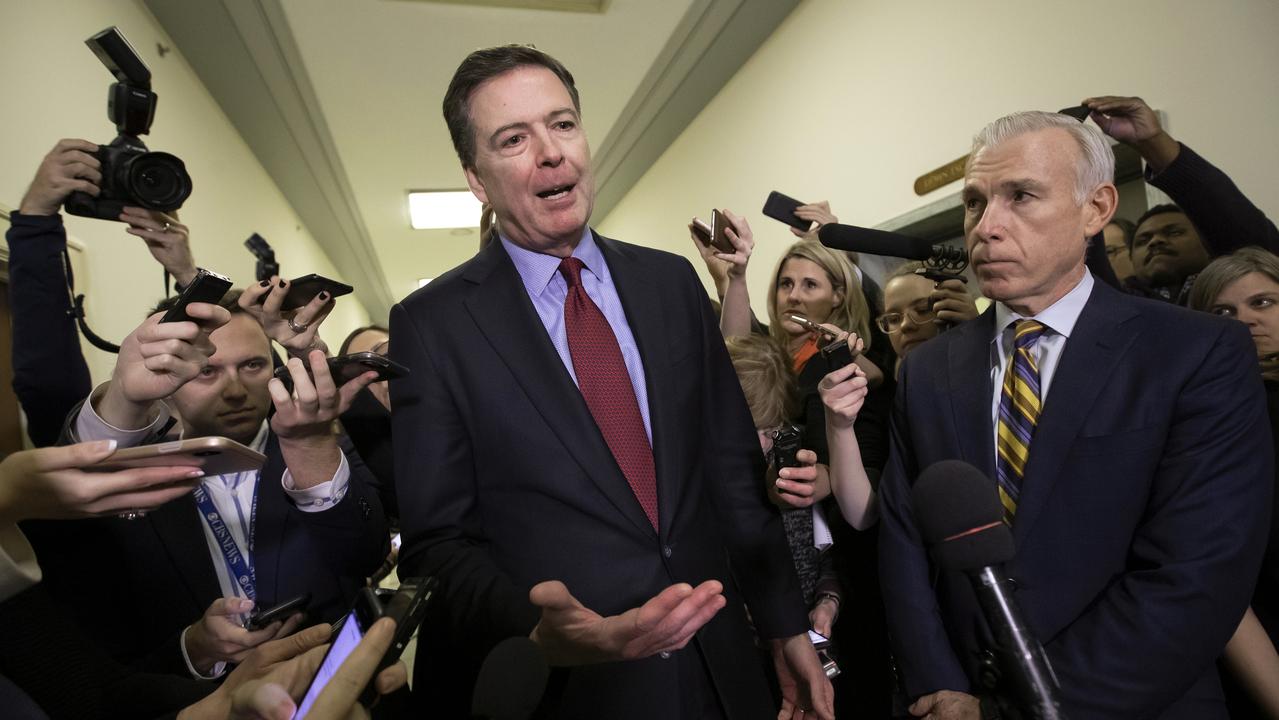Bottom of the harbour
LARGE-SCALE poisoning of the marine life in Queensland's Gladstone harbour is being blamed on dredging to upgrade the port.

IT took 10 years for Graham McVean to get permission to build a jetty on his private getaway island, located in an unlikely paradise in the Gladstone industrial port harbour on the central Queensland coast.
McVean could never understand why his jetty posed such an unacceptable environmental risk, surrounded as it was by a coal loader, Australia's biggest cement works, two failed shale oil projects, an alumina refinery, aluminium smelter and cyanide factory for the gold industry.
Nowadays, after tying his commuter boat to the pontoon, McVean likes to celebrate his triumph over bureaucracy by taking a leak into the surrounding waters.
Such is the security at Gladstone Port, McVean - a former television and radio executive for Christopher Skase and present adviser to Gladstone's greenhorn federal Liberal National Party member Ken O'Dowd - says he once received a telephone call from a harbour worker to admonish his indiscretion. McVean's spray had been monitored from kilometres away by a port camera that he later found was powerful enough to read the name tag pinned to the breast of a thief who broke into his island sanctuary.
It raises the question, how has Australia's most closely watched port missed what has been happening right in front of its eyes?
The fish no longer come to be fed at McVean's jetty. Record numbers of dolphins, dugongs and turtles have washed up dead on Gladstone's shores during the past year. Oysters have disappeared from the harbour pylons. Sharks and stingrays are being caught with red rashes.
Large numbers of crabs are presenting with deformed shells, while barramundi and other scale fish are being pulled from the waters with bulging red eyes and red raw sores.
Two contrasting explanations have been offered.
The first is that last year's floods, which turned the harbour waters fresh and brought an abundance of barramundi from the dams to the sea, disrupted the ecological balance.
The second is that dredging of Gladstone harbour to enable Queensland's multibillion-dollar liquefied natural gas industry to export coal-seam gas to Asia has stirred up misdeeds of the past and poisoned the water.
"Absolute rubbish," says Gladstone Port chief executive Leo Zussino. "In 1994 we gave Central Queensland University $750,000 to do health checks of the harbour on an annual basis. They tested the micro-organisms in the harbour and year after year they said everything is fine," he says.
"(From) 1998 to 2005 there was a study into dissolved metals in the harbour bottom and that was the most definitive study into dissolved metals in Gladstone harbour. That basically said there was no sign of anthropogenic activity in the metals in Gladstone harbour."
Today, however, the scientific jury is still out.
An expert panel is due to report to the Queensland government this month on the credibility of its efforts so far to identify the problem's cause. Tests are still being conducted on about 70 fish across species dragged from the waters showing signs of disease.
For many within Gladstone's fishing community the effect the multibillion-dollar Curtis Island LNG developments would have on business has been obvious for a long time.
Gladstone Fish Market owner Simon Whittingham says his business first started to notice the impact of the LNG development when six boats "just upped and went north" because of increased harbour traffic.
"I worked it out at about $170,000 a month in lost business just in what left here in March," Whittingham says.
Environmentally, "the fish are telling the story here", says long-time Gladstone fisherman Trevor Falson. "Fish are stressed from the harbour itself, from digging up the mud.
"This fresh-water crap, I'm sick of hearing it. They had to blame something and it was quite easy to blame the fresh water.
"Prawns should have been abundant this year but there are f . . k-all prawns," he says. "Crabs should have been abundant but it is the worst year they have ever had for Gladstone. The rest of the state is having a good crop.
"Why is it only Gladstone with the problem? Because they are digging up the bottom of the harbour and releasing all the toxins," Falson says. "They should never have started the dredging until they sorted out all the fishermen. That would have been the right thing to do."
The fish scare is complicated by a Co-ordinator-General recommendation that Gladstone Port pay compensation to local fishermen for the impact dredging would have on their livelihood as part of the development approval.
By not dealing with the issue of compensation before dredging started, the Gladstone Ports Corporation has left many in the local fishing industry desperate and wanting to speak out. It has also encouraged class-action lawyers to gain a foothold and spread the compensation net.
Rebecca Jancauskas of personal injury lawyers Shine says she now represents 60 local businesses in the fishing and marine industries. Shine wants to sideline the port authority from negotiations and cut a deal directly with Queensland Premier Anna Bligh.
"It has been suggested that this is a new problem," Jancauskas says. "But I have got statements that this is the third issue in 25 years of ulcerated fish associated with dredging.
"We are concerned that the (compensation) committee's objectivity is compromised because Leo (Zussino) is part of the advisory committee and also must approve the compensation: a clear conflict of interest."
And while Zussino may dispute a link exists between dredging and the health of fish stocks, he certainly has been concerned about the issue of sea-bed contamination in the past.
In May 2007, Zussino opposed a nickel project in the harbour on environmental grounds.
In a letter on Central Queensland Ports Authority letterhead, Zussino said the authority "again draws the attention of the state to the possible accumulative effects of a number of industries discharging material into port waters, which in themselves can be demonstrated to be under international standards for disposal but when combined with other discharges into port waters, may have a deleterious effect on the port environs. This has the potential to limit severely, or even cause the practice of sea dumping of dredge material to cease entirely."
In addition to the diseased fish, the dumping of dredge spoil for the LNG developments has caused uproar because of its close proximity to the Great Barrier Reef Marine Park and the fact it is taking place within the World Heritage zone.
Ted Whittingham (Simon's father) says if it had been any developer other than Gladstone Ports Corporation the dredging would have been halted.
"Any developer that damages the environment gets shut down until it can prove it wasn't the cause of the problem, except the Ports Corp. Why," Whittingham asks rhetorically. "Because it has one shareholder and that is the state government."
The director-general of Queensland's Department of Environment and Resource Development, Jim Reeves, says: "I am at a loss because of all this conflicting information. The scientific panel will have a look over our shoulder at all the work we have done and may recommend we test for other things. Bio Security Queensland will look at all of the testing of fish. We have got the best experts in the field," he says.
"If it leads to the fault being something that is in the sediments we will have to deal with that. We are not interested in dredging at all costs.
"This channel is pretty important for the future of the LNG development," Reeves says, "but it is not something that if it is having a high detrimental impact we would cop; we would try to mitigate that."
According to Zussino, when the LNG and other developments are complete, the Gladstone Port will provide $3 billion to $5bn a year to the state in royalties.
"We are setting up Gladstone to be a model industrial city," he says. "There is $30bn in direct investment and a 25-year process of strategic planning.
"We are on an absolute roll now and this is not going to stop any time soon."
Zussino stresses the benefits of the industry to the region. "You have got kids just finishing their apprenticeship and going off and earning 150 grand," he says.
But he recognises there is a price to pay. "We have never said there is no environmental impact," he says. "The fact is dredging is harmful to the environment but we are an island continent and our ports are the lifeblood of the economy. If you want to stop trading with the world, the prosperity disappears."
Ted Whittingham responds the arguments from fishermen are not anti-progress.
"It is about transparency," he says. "I understand we have sold this place for $900 million a year for gas royalties, and I am OK with that. I accept it as part of regional Queensland's burden (that) it has to bear for increasing mining and increasing the gross domestic product of the nation.
"All I want is some sort of transparency from within the state and federal governments about what they are doing here. Every marine biologist who will talk to us has said the ecosystem has just collapsed."
McVean has the same demand. "My wife used to throw a slice of bread into the water and 100 bream would come up. They stopped coming six months ago when the dredging started."
"You look off the jetty you can see the particles floating in the water. The fish have moved on," he says.
McVean believes there needs to be a complete change in attitude and in the management in charge of such projects.
"I would argue the authority has known what is on the bottom of this harbour for a long time and they have covered it up," he says. "In business, honesty has got to be the best policy. If you cocked up, you have to admit it and fix it. While they try to hide it, people just get angry."


